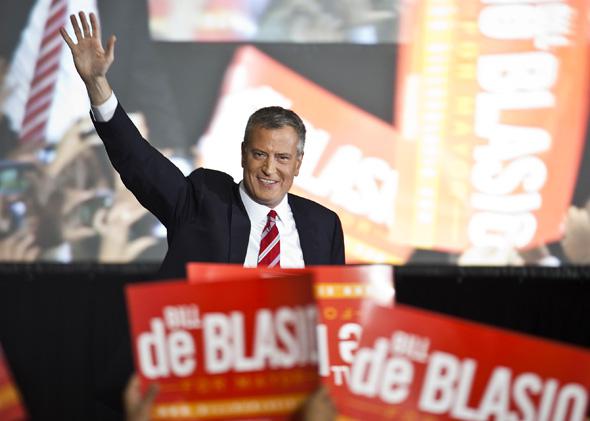For those who dislike Bill de Blasio’s vision for New York City—and even for some who voted for him—his election as the city’s next mayor raises a provocative question: Is a progressive city possible?
For the last half century, the answer to that question seemed to be no.
De Blasio has been very clear about his plans to reduce the city’s inequality by raising taxes on the rich, increasing services for the poor, and ending subsidies for corporations.
But his plan flies in the face of the conventional wisdom that has dominated our thinking about cities since at least the 1970s. According to that wisdom, cities are “competing” in a global marketplace for mobile businesses and residents, and a city’s efforts to redistribute from rich to poor—to provide expanded health care, more education, or a local living wage—are doomed. Cities cannot redistribute because wealthy city residents and the businesses that employ them will pack up and leave. Therefore, the successful metropolis must pursue business-friendly, growth-oriented policies that attract professionals and corporations, even if those policies result in greater income inequality.
For de Blasio’s skeptics, no city can resist mobile capital. Thus, de Blasio will either lead New York City into certain economic decline or he will be forced to abandon his most ambitious policies. If that is true, then there is only one way to be a mayor of a global, post-industrial city: Be Michael Bloomberg—a nonpartisan, technocrat attentive to the city’s competitive position and comfortable with a city of wealth and corporate privilege. A mayor may choose to sound progressive, but when it comes to policy he or she has no choice but to encourage urban investment at the expense of combating inequality.
That view of the city’s ambitions is based on a kernel of economic truth. Certainly there are limits to what cities can do, and we should be realistic about them. But there are good reasons to believe that these constraints are dramatically overstated.
First, we know that cities have always provided more welfare benefits to the poor than seemed possible if the pure “no-redistribution” theory is correct. Consider that over 40 years in the middle of the 20th century, New York City built thousands of working- and middle-class homes, hundreds of schools, libraries, and parks, and thousands of miles of roadways, bridges, tunnels, and subways. This basic infrastructure raised living standards for the urban poor, which in turn helped produce a robust urban middle class by the 1950s.
Second, there is growing evidence that wealthy firms and highly skilled residents are not as mobile as was once thought. The city provides a home for a number of industries—fashion, finance, medicine, law, design, art, tourism—that cannot be easily replicated elsewhere. Industries that rely on sharing ideas, intellectual capital, or a deep bench of skilled workers need to be in a place where people feel connected. That place is the city, and for certain key industries, New York City. The same goes for the amenities that residents come to New York City to enjoy—its street life, restaurants, and so on. The suburbs or other cities often can’t compete.
Third, what we know about the revival of cities in the last 20 years is that it has not been driven by the dramatic lowering of local taxes and regulations. Some of our most economically robust cities—and New York is among them—have high taxes and substantial rules and regulations when compared to the suburbs or cities in the sunbelt. The growing popularity of cities is a global phenomenon and is driven by factors well beyond local tax and welfare policies. Technological and demographic change, shifts in consumer preferences, rising transportation costs, crime reduction, and the rise of the finance, technology, health care, and higher-education sectors of the economy have all contributed to the urban boom.
If a city’s economy is otherwise healthy, then redistributive fiscal policies are unlikely to make much of a difference. And mayors probably cannot control the size of the local economy as much as they claim anyway. But mayors can fight inequality by channeling resources to those who need them most. To those who believe that society has an obligation to pursue social justice, the moral benefits are obvious. The economic benefits of having an urban, healthy, educated workforce are obvious, too.
If a revived urban liberalism is possible, then its time is now, while cities like New York can take advantage of their privileged position as highly desirable places to live. Not all cities are in that enviable position. Many cannot afford what Mayor de Blasio proposes. But if New York City’s new mayor succeeds, he will advance an idea that has mostly gone out of fashion: that cities can play a significant role in creating an urban middle class by providing the kinds of resources necessary for upward mobility. Those resources are basic and obvious: security, education, transportation, health, and shelter. Expanding access to those kinds of municipal goods will create a more equal city. And it may teach us that a progressive city is still possible.
